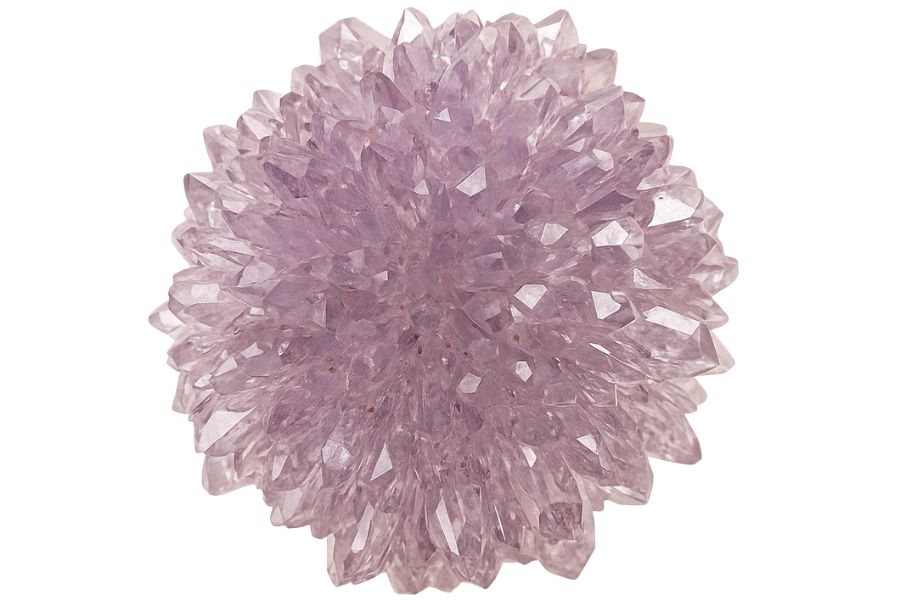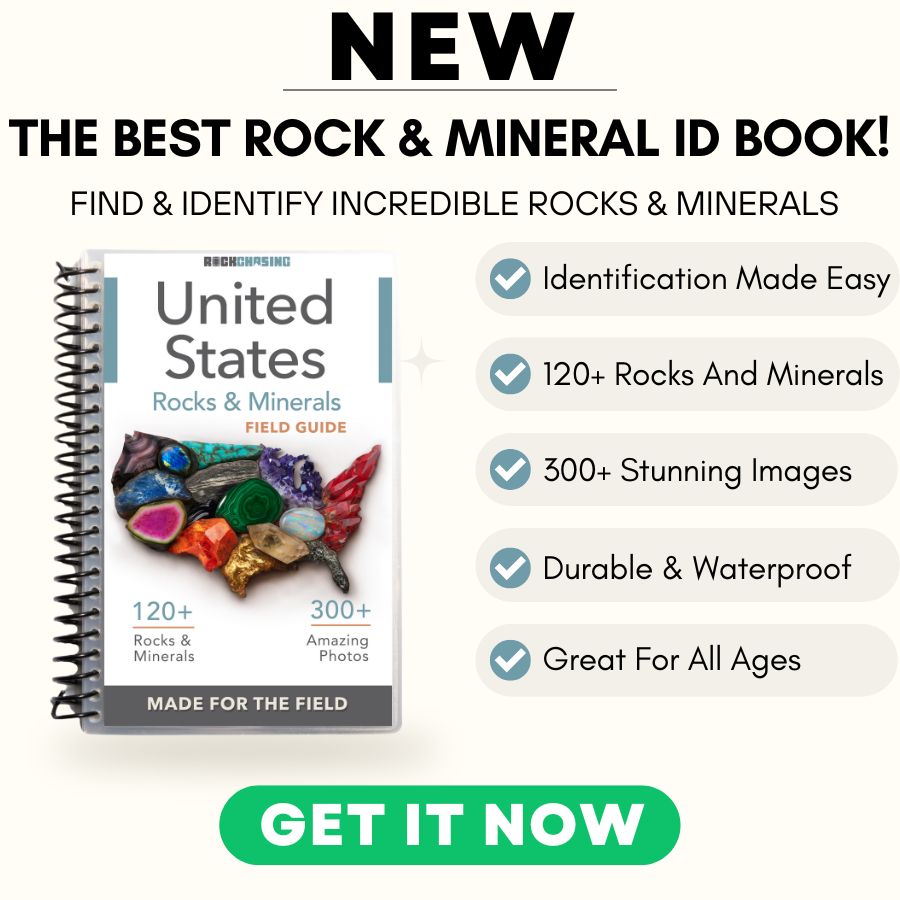When you think about finding beautiful crystals in Alabama, you might be surprised by the variety and quality of specimens waiting to be uncovered in the Southeast.
This often-overlooked region can yield a surprising variety and quality of crystalline treasures for those willing to get their hands dirty.
Across the state’s various prospecting areas, you can uncover lovely specimens of amethyst, various forms of agate, beautiful crystals of quartz, and even some interesting finds like barite and staurolite.
To successfully start your adventure in the field, you’ll need to know the best spots in the state where you can look for crystals.
- The extensive local experience and understanding of our team
- Input from multiple local crystal hunters and crystal collecting groups
- The accessibility of the crystal mining locations
- Safety and potential hazards when collecting
- Private and public locations
- A desire to include locations for both experienced crystal hunters and those who are just starting out
Using these weights we think we’ve put together the best list out there for those who love finding new crystals for our collections!
The Types of Alabama Crystals You Can Find
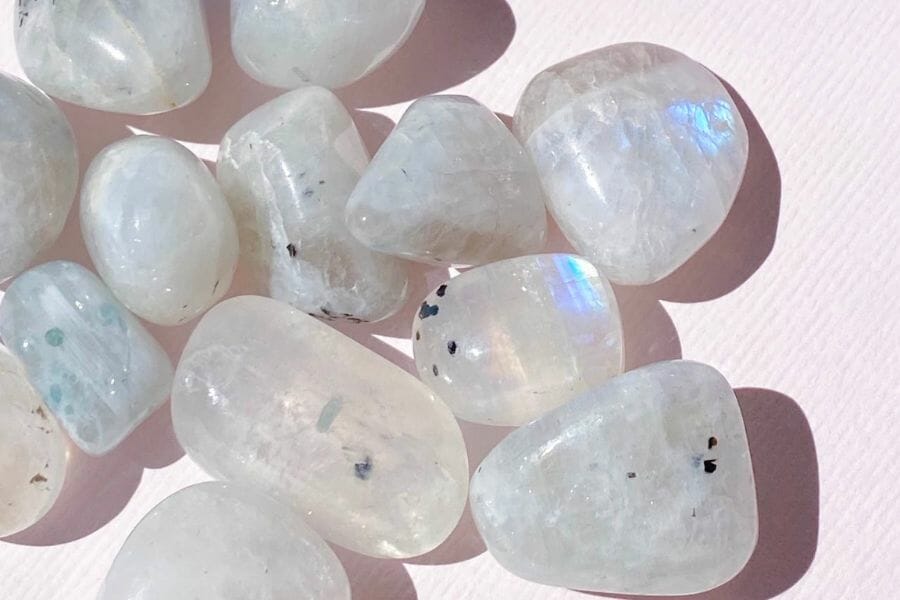
Alabama is home to some of the most beautiful and unique crystals in the world, making it a popular destination for crystal hunters and enthusiasts. Each crystal has its own unique characteristics, making them a fascinating subject for collectors and researchers alike. The beauty of Alabama’s crystals is not only in their visual appeal, but also in the energy and healing properties they possess. Here are the different types of crystals you’ll find here:
Corundum
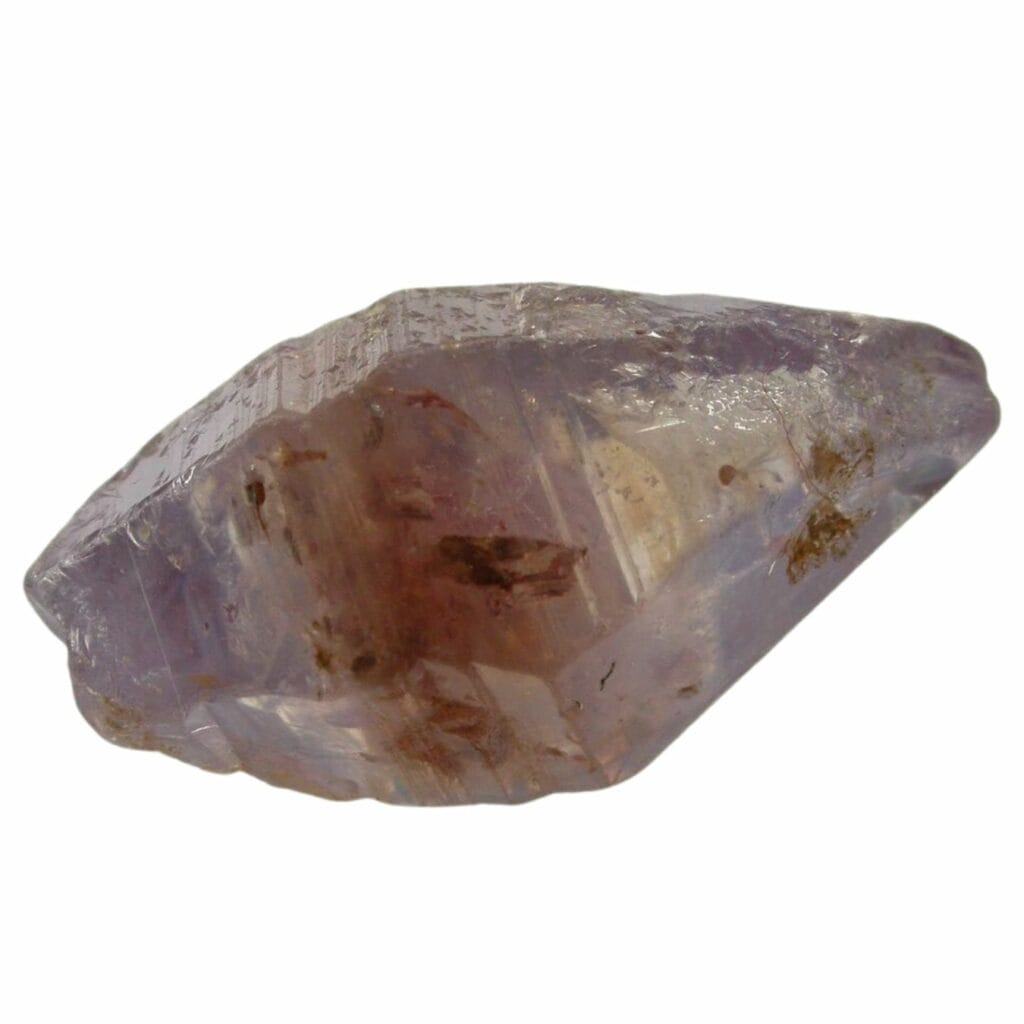
Corundum is one of the valuable rocks in Alabama found in Alabama, known for being one of the hardest substances on Earth.
It’s made up of aluminum and oxygen and forms deep in the Earth under high temperatures and pressures, usually in metamorphic rocks.
This tough mineral can come in a variety of colors, but the most well-known are the bright red rubies and deep blue sapphires. In fact, all red corundum is called ruby, and all other colors are called sapphire.
What’s really cool about corundum is its hardness. It’s the second-hardest natural substance after diamond. This makes it very resistant to scratches and wear, which is why it’s so popular in jewelry.
The only thing that can really scratch corundum is another piece of corundum or a diamond.
Corundum crystals with bright, clear colors are more sought after and can be worth a lot. Crystals with good clarity and fewer marks and blemishes inside are typically more valuable.
And of course, the rarity of the color and the size of the corundum piece also play a part in its value.
Corundum isn’t just valuable for making beautiful jewelry; it also has some practical uses. Because of its hardness, it’s used in industrial tools like grinding wheels and cutting tools.
Where you can find corundum in Alabama
- Doss Mountain complex, Chambers County
- Alexander City, Coosa County
- Easton-Dudleyville area, Tallapoosa County
Hematite
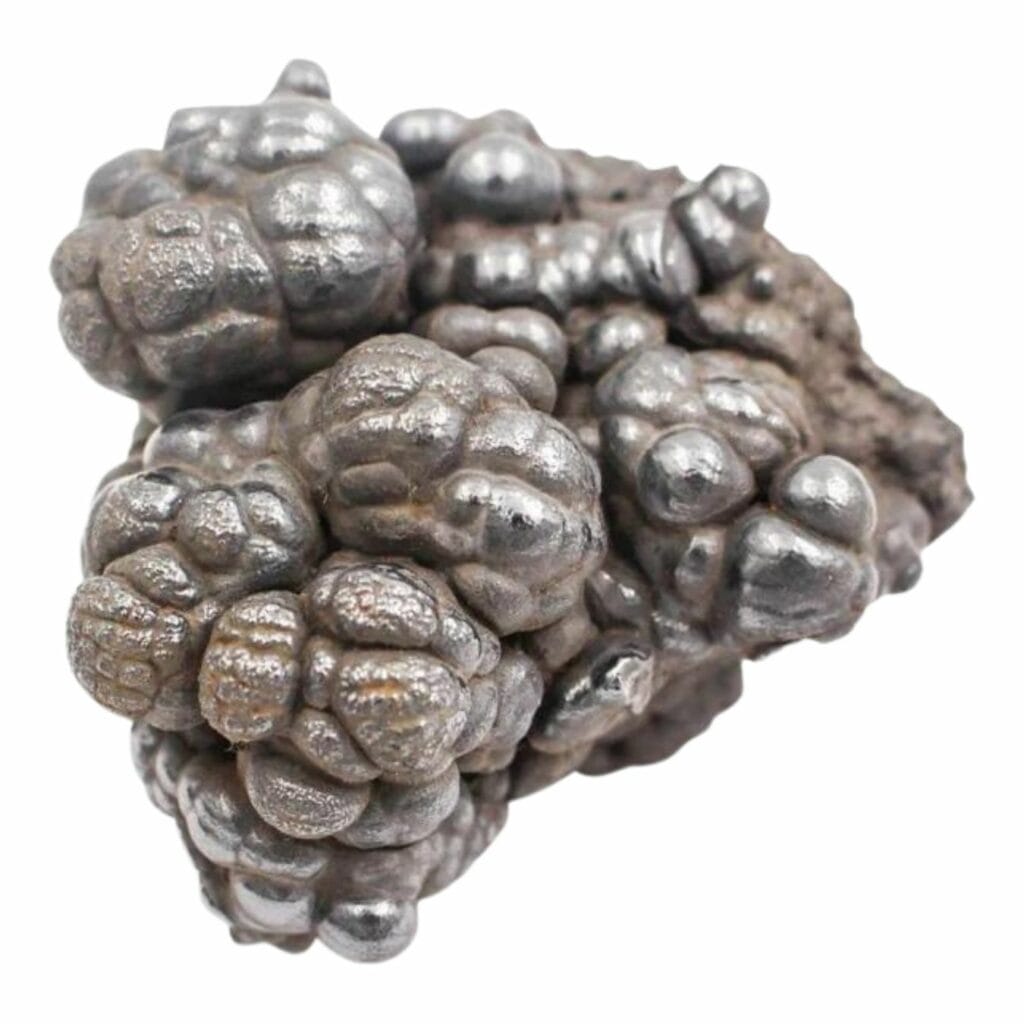
Hematite is a fascinating mineral that has a unique, shiny, metallic appearance and reddish-brown color. It forms in a variety of ways, often in environments rich in iron.
When iron and oxygen mix in water or are exposed to the air, they create hematite over time. This process can happen in many places, like near water bodies or within iron-rich soils.
One of the most noticeable things about hematite is its density and weight. It feels heavier than it looks, which is always a surprise when you pick it up.
Its shiny surface, which can be polished to a mirror-like finish, makes it popular for jewelry and decorative items.
Hematite’s red-brown streak, which is the color it leaves when rubbed on a surface, is another distinctive feature.
The value of hematite goes beyond its appearance. It is an iron ore, which means it’s a main source of iron.
This makes hematite incredibly valuable in many industries. Iron from hematite is used to make steel, which is essential in building structures, making cars, and manufacturing various products.
This industrial importance significantly increases the value of hematite.
Where you can find hematite in Alabama
- Compton Mine, Blount County
- Gaylesville, Cherokee County
- Gadsden Mining District, Etowah County
Azurite
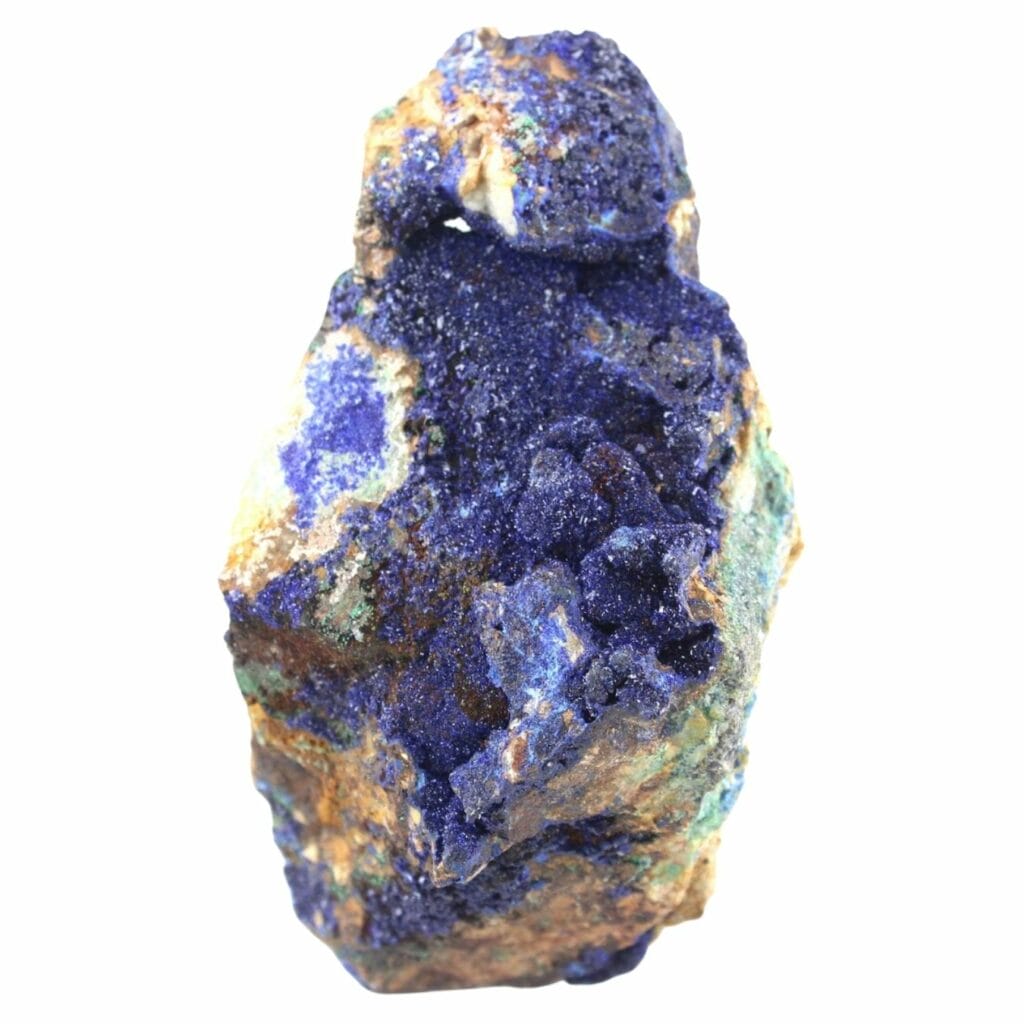
Azurite is a stunning mineral known for its deep blue color, adding a splash of brilliance to the rocks found in Alabama. It’s made of copper, carbon, and oxygen, and usually forms in places where copper-rich rocks are exposed to air and water.
This process, called weathering, changes the copper into azurite over time. You can often find azurite in the same areas as green malachite, another copper mineral, and sometimes they even grow together, creating a beautiful contrast of blue and green.
The deep, rich blue color of azurite is what makes it really stand out. This vibrant hue has been admired for centuries, and in the past, people even ground up azurite to use as a blue pigment in paints.
Nowadays, its bright color still catches the eye, making it a favorite among mineral collectors.
Color is a major factor in the value of azurite – the deeper and more vivid the blue, the more desirable the azurite.
The formation of the crystals is also important. Well-formed, sharp azurite crystals are more sought after than those that are less distinct.
Azurite’s combination with other minerals, like malachite, can also add to its appeal, creating unique and striking patterns.
Where you can find azurite in Alabama
- Coleta, Clay County
- Wood Copper Mine, Cleburne County
- St. Clair County
Chalcopyrite

Chalcopyrite is a fascinating mineral, known for its shiny, metallic luster and brass-yellow color, and it’s one of the interesting crystals found in Alabama.
It’s composed of copper, iron, and sulfur, and it often forms in places where there’s a lot of heat and pressure deep underground. Chalcopyrite is most commonly found in sulfide deposits, where it can form impressive, shiny crystals.
What’s neat about chalcopyrite is that despite its gold-like appearance, it’s actually the most important source of copper. This is why it’s sometimes called “fool’s gold,” because it can trick people into thinking they’ve found real gold.
The bright yellow color can also tarnish to a variety of iridescent hues, which adds to its appeal.
For collectors, the bigger and more well-formed the crystals, the better. If the crystals have maintained their bright, metallic luster and haven’t tarnished much, they’re more desirable.
For those in the mining industry, chalcopyrite’s value lies in its copper content. Copper is a key metal used in wiring, electronics, and many other applications, making chalcopyrite an important mineral resource.
Where you can find chalcopyrite in Alabama
- Angel Mining District, Calhoun County
- Goldville Mining District, Tallapoosa County
- Gold Ridge, Coosa County
Covellite
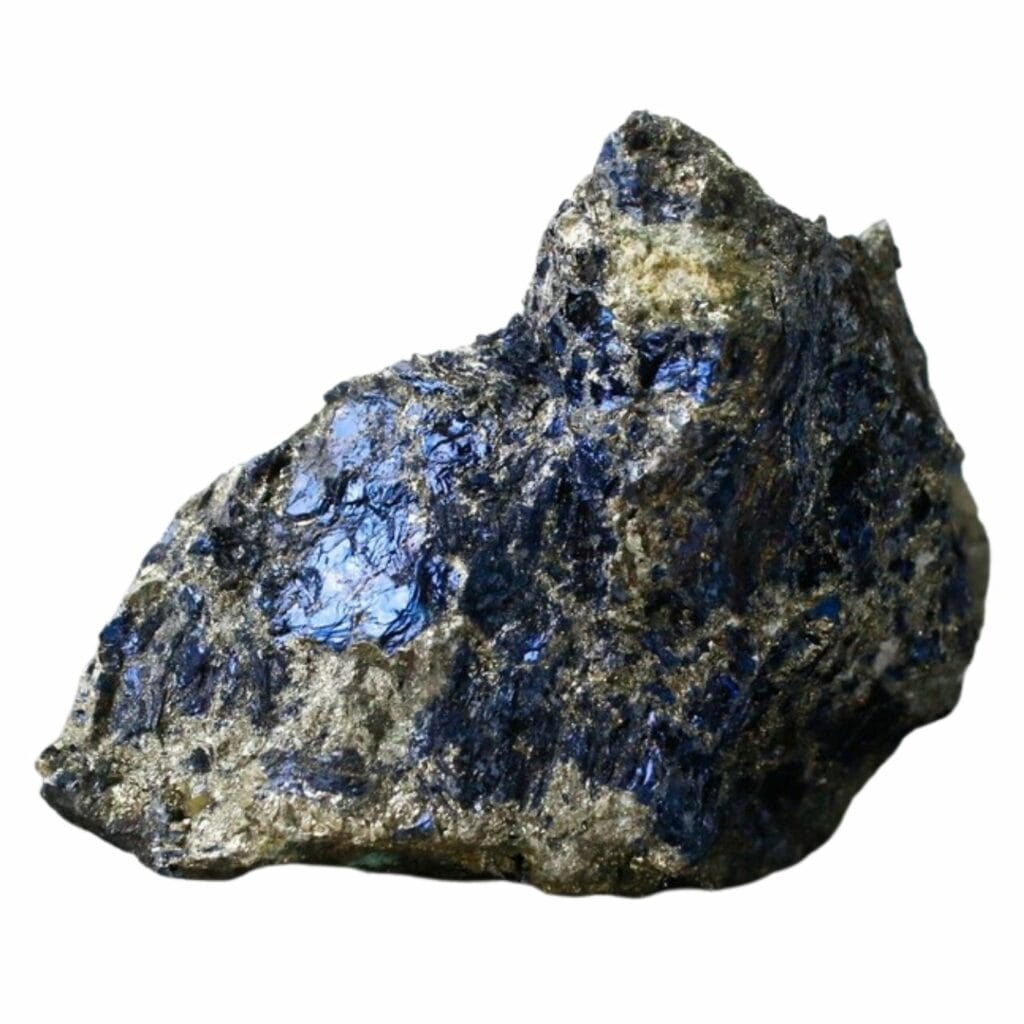
Covellite is a unique and striking mineral known for its deep blue to purple color. It’s a copper sulfide mineral, meaning it’s made up of copper and sulfur.
Covellite is often formed through the alteration of other copper sulfide minerals, like chalcopyrite. This can happen in different geological settings, often involving a lot of heat and water.
The appearance of covellite is what really catches the eye. Its deep indigo and sometimes iridescent colors can be quite stunning. When polished, covellite can have a metallic luster, making it look even more impressive.
The thin, plate-like crystals, often intergrown in a layered structure, give it a unique texture.
For mineral collectors, the beauty and rarity of covellite make it a prized find. The more intense and attractive the color, the more valuable the specimen.
Its rarity also contributes to its appeal, as covellite isn’t found in large quantities like some other minerals.
Covellite is also valued for its copper content. Copper is a widely used metal, important in electrical wiring, plumbing, and many other applications.
Where you can find covellite in Alabama
- Pyriton Mining District, Clay County
- Wood Copper Mine, Cleburne County
- Devils Backbone Mining District, Tallapoosa County
Galena
Galena is an important part of the various types of rocks found in Alabama. It forms in near-perfect cubic crystals and has a naturally shiny, metallic luster.
It’s made of lead and sulfur, and it often forms in hydrothermal veins where hot fluids move through cracks in rocks and deposit minerals.
What’s really cool about galena is its high density – it’s very heavy for its size, which surprises many people when they pick it up for the first time.
The cubes and other shapes that galena crystals form are also quite interesting. They have sharp angles and smooth surfaces, making them stand out among other minerals.
The perfection of its cubic crystals and its shiny metallic appearance make galena a favorite among rock collectors.
But beyond its appeal to collectors, galena is also valuable for its lead content. Lead is used in batteries, radiation protection, and in the past, was used in pipes and paint.
However, because lead can be harmful, it’s important to handle galena with care.
Where you can find galena in Alabama
- Jamestown, Cherokee County
- Millerville, Clay County
- Guntersville, Marshall County
Halite
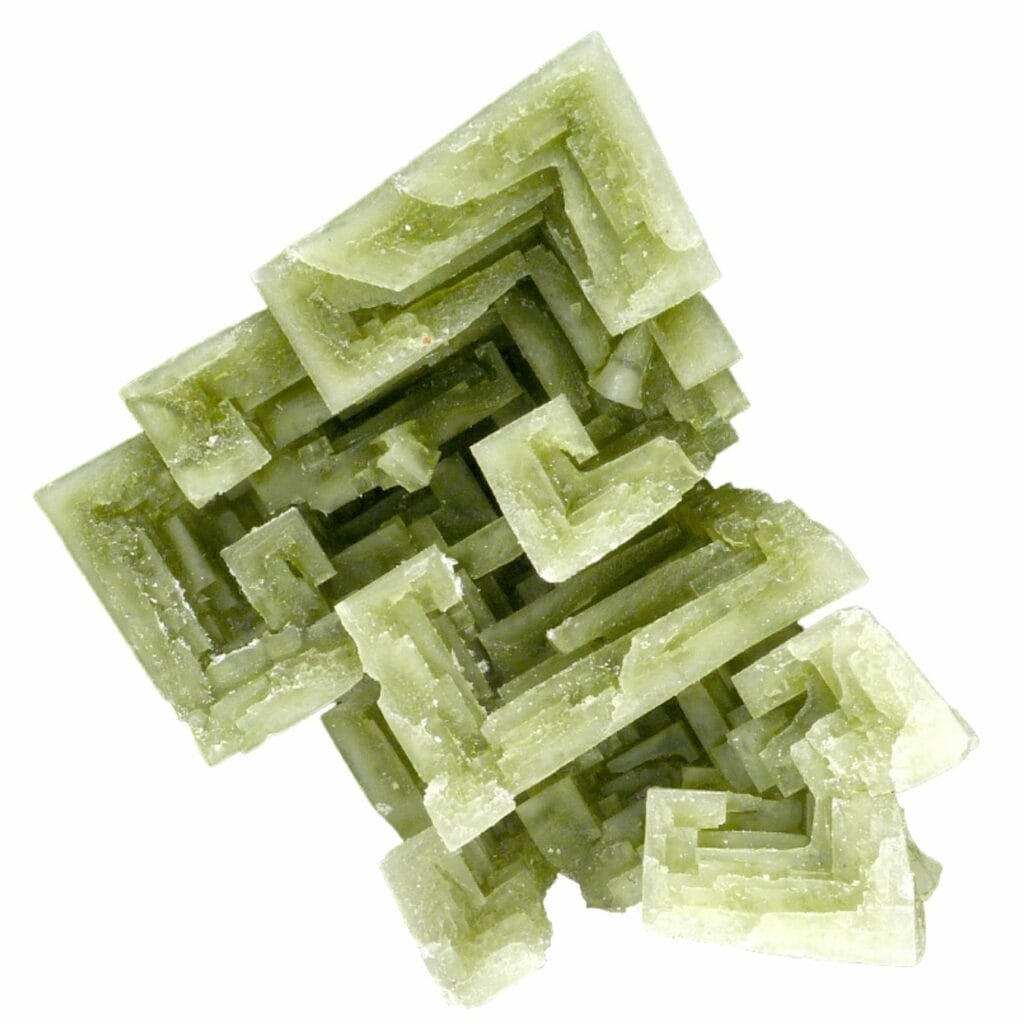
Halite, commonly known as rock salt, is a fascinating mineral found in Alabama. It’s made entirely of sodium chloride – the same stuff that’s in table salt.
This minerals forms in areas where salty water, like from a sea or lake, evaporates and leaves behind salt crystals. Over time, these crystals build up and turn into halite.
One of the cool things about halite is its taste – it’s salty, just like the salt used in kitchens. It often forms clear, cube-shaped crystals, and sometimes these crystals can get pretty big.
Halite can also be found in different colors, like pink or blue, depending on the impurities within it.
Halite is essential in our daily lives. Salt is used in cooking, preserving food, and even in melting ice on roads in the winter. In industries, large amounts of halite are used in manufacturing and chemical production.
It’s also an interesting mineral to study because it tells us about past environments. Finding halite can indicate that an area used to be underwater.
Where you can find halite in Alabama
- McIntosh Mine, Washington County
- Salt Creek, Clarke County
- Louann Salt, Wilcox County
Pyrite
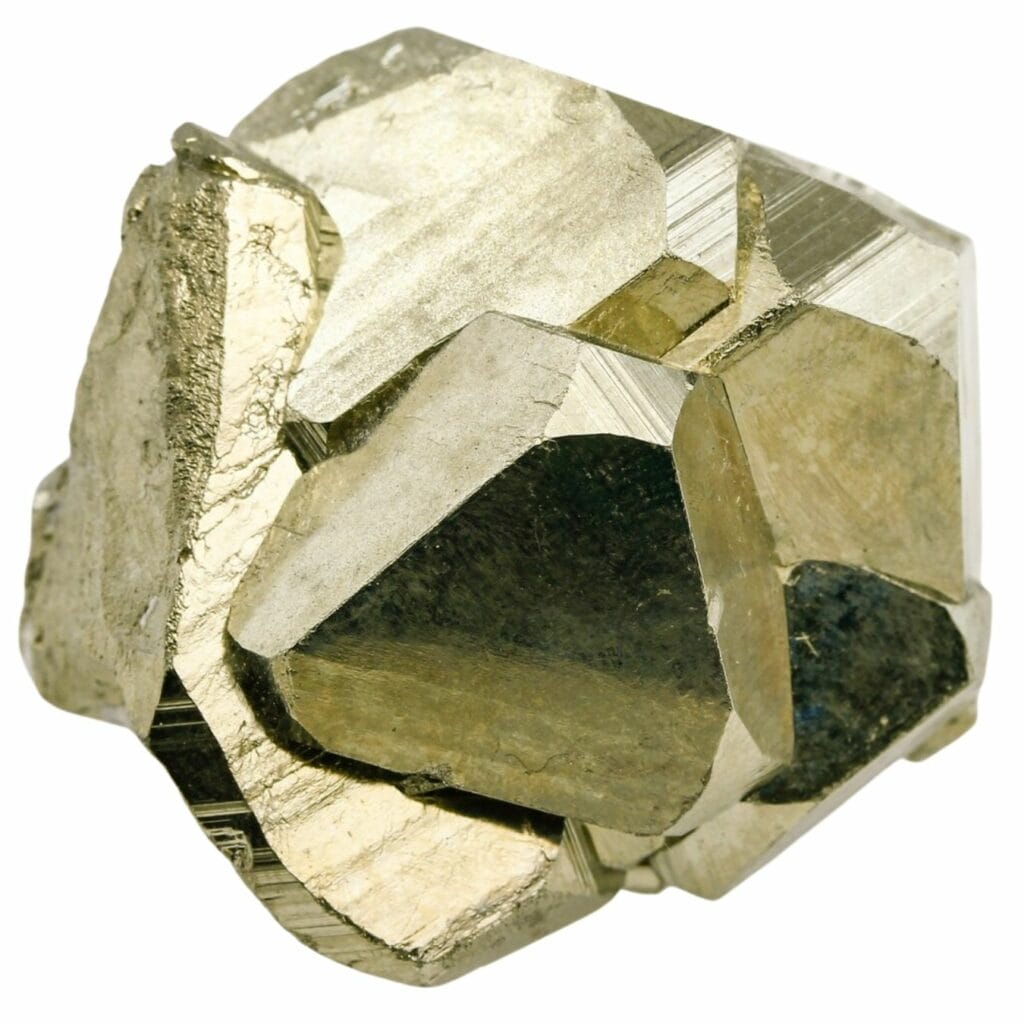
Pyrite is a shiny, metallic-looking mineral found in Alabama. It’s made of iron and sulfur and forms in many different geological environments, often in places where there’s a lot of heat and pressure.
It can be found in beautiful, well-formed crystals, and sometimes these crystals form perfect cubes, which is pretty neat.
What makes pyrite stand out is its metallic luster and gold color. These features have tricked many people into thinking they’ve found real gold, hence the nickname “fool’s gold.”
The value of pyrite comes from several aspects. For mineral collectors, the shape and size of the crystals are important. Well-formed, shiny cubes or other shapes are especially prized.
Pyrite also has a historical significance; it was used in the early days of firearms and has been found in prehistoric burial mounds, showing that it has been valued by people for a long time.
In addition to being a collector’s item, pyrite is useful in various industries. It’s used in the production of sulfuric acid and sometimes in the making of jewelry.
Where you can find pyrite in Alabama
- Woodville Quarry, Jackson County
- Pyriton Mining District, Clay County
- Devils Backbone Mining District, Tallapoosa County
Sphalerite
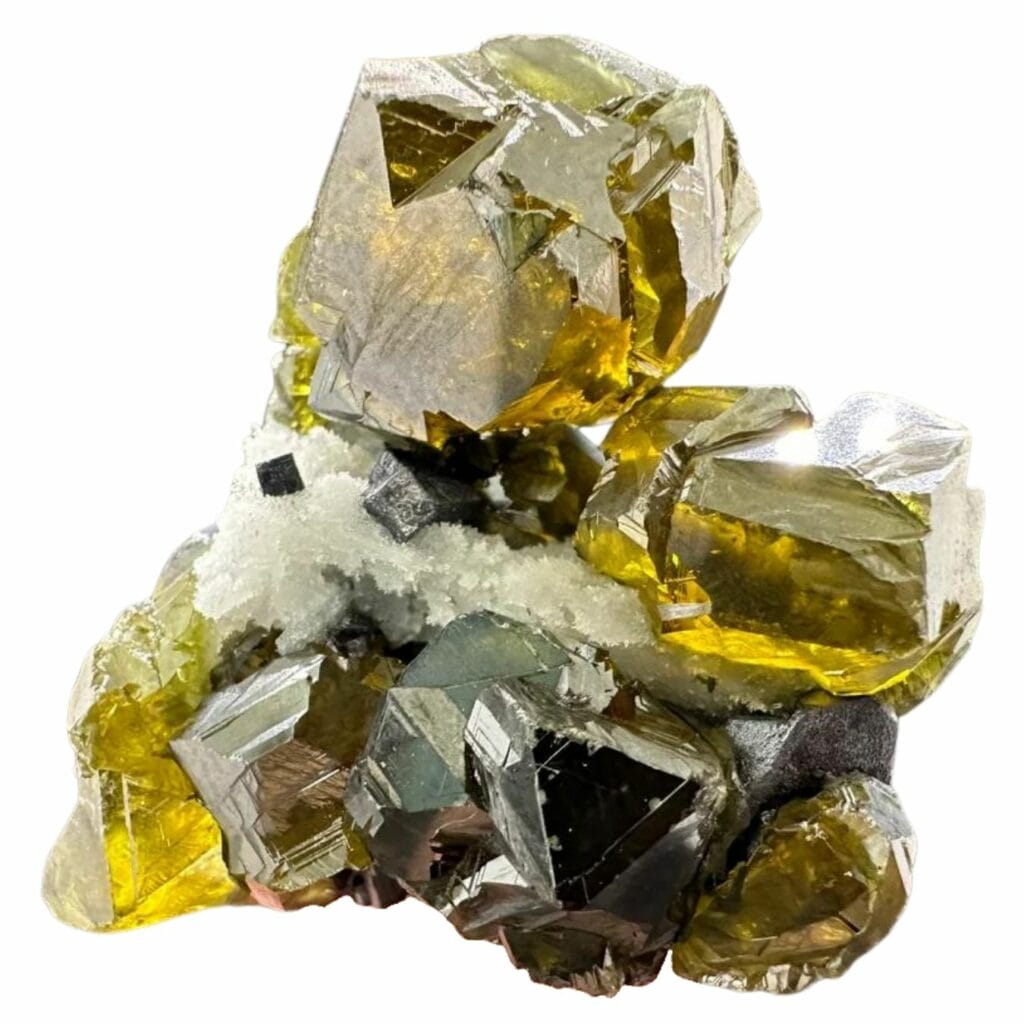
Sphalerite is an interesting and important mineral, especially among the various crystals found in Alabama.
It forms in different geological settings, often where hot fluids from deep in the Earth come up and deposit minerals in cracks or openings in rocks.
What’s really cool about sphalerite is the range of colors it can have. Depending on its iron content, sphalerite can be yellow, brown, red, green, or black.
It’s also known for its high dispersion, which means it can show flashes of brilliant colors, kind of like a diamond, when light hits it just right.
The color, brightness, and crystal forms are important when determining the quality of sphalerite crystals. Well-formed crystals with bright colors are especially sought after.
But sphalerite isn’t just pretty to look at; it’s also very useful. As the main source of zinc, it’s important in making things like brass and other alloys, and zinc is also used in batteries and other products.
Where you can find sphalerite in Alabama
- Cragford Mining District, Randolph County
Spinel

Spinel is known for its beauty and range of colors. This mineral is made of magnesium and aluminum, and it forms deep within the Earth under high heat and pressure conditions.
It can be found in a variety of colors, including red, pink, blue, and purple. The color of spinel depends on the presence of other elements, like iron or chromium, which get mixed in as the mineral forms.
What’s really cool about spinel is its durability and brilliance. It’s quite hard, which means it doesn’t scratch easily. This makes it great for jewelry that you can wear every day without worrying too much about damage.
Spinel also has a high level of brilliance, which means it sparkles a lot when light hits it.
The value of spinel comes from several factors. First, the color is a big deal. Bright, vivid colors like deep reds and vibrant blues are especially prized.
Clarity, or how clear the spinel is, also adds to its value. Fewer internal marks or blemishes mean a higher quality stone. And of course, the rarer the color of the spinel, the more valuable it is.
For a long time, spinel was often mistaken for other gemstones like ruby or sapphire. But now, people recognize it for its own unique beauty and qualities.
Where you can find spinel in Alabama
- Wood Copper Mine, Cleburne County
- Doss Mountain, Chambers County
- Easton-Dudleyville, Tallapoosa County
Tourmaline
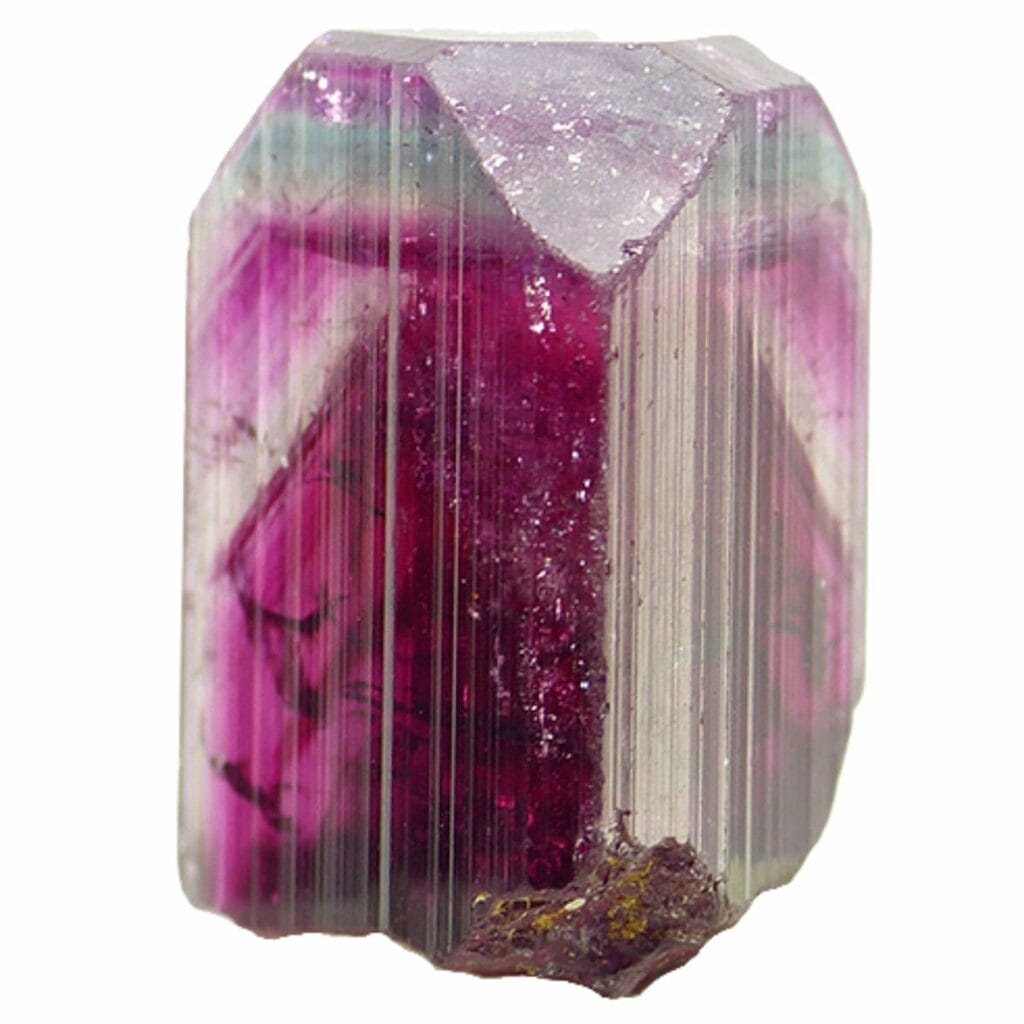
Tourmaline is a remarkable and colorful mineral that comes in almost every color you can think of, from vivid greens and pinks to deep blues and reds. Sometimes, a single crystal can have multiple colors, which is a phenomenon called color zoning.
This can result in some really stunning patterns, making each piece of tourmaline unique. Even more amazing, some tourmaline crystals change color depending on the light.
This variety is thanks to the different elements that get mixed in with the tourmaline as it forms, like iron, manganese, or lithium.
Tourmaline is often found in igneous and metamorphic rocks, where it forms beautiful, long, slender crystals.
Color is a huge factor in determining the value of tourmaline – bright, intense colors and unique color combinations are highly sought after.
Clarity, or how clear the crystal is, also plays a part in its value, along with the quality of the crystal itself. Large, well-formed tourmaline crystals without many internal flaws or blemishes are especially prized.
Where you can find tourmaline in Alabama
- Gold Hill, Chambers County
- Delta, Clay County
- Rockford Mining District, Coosa County
Garnet
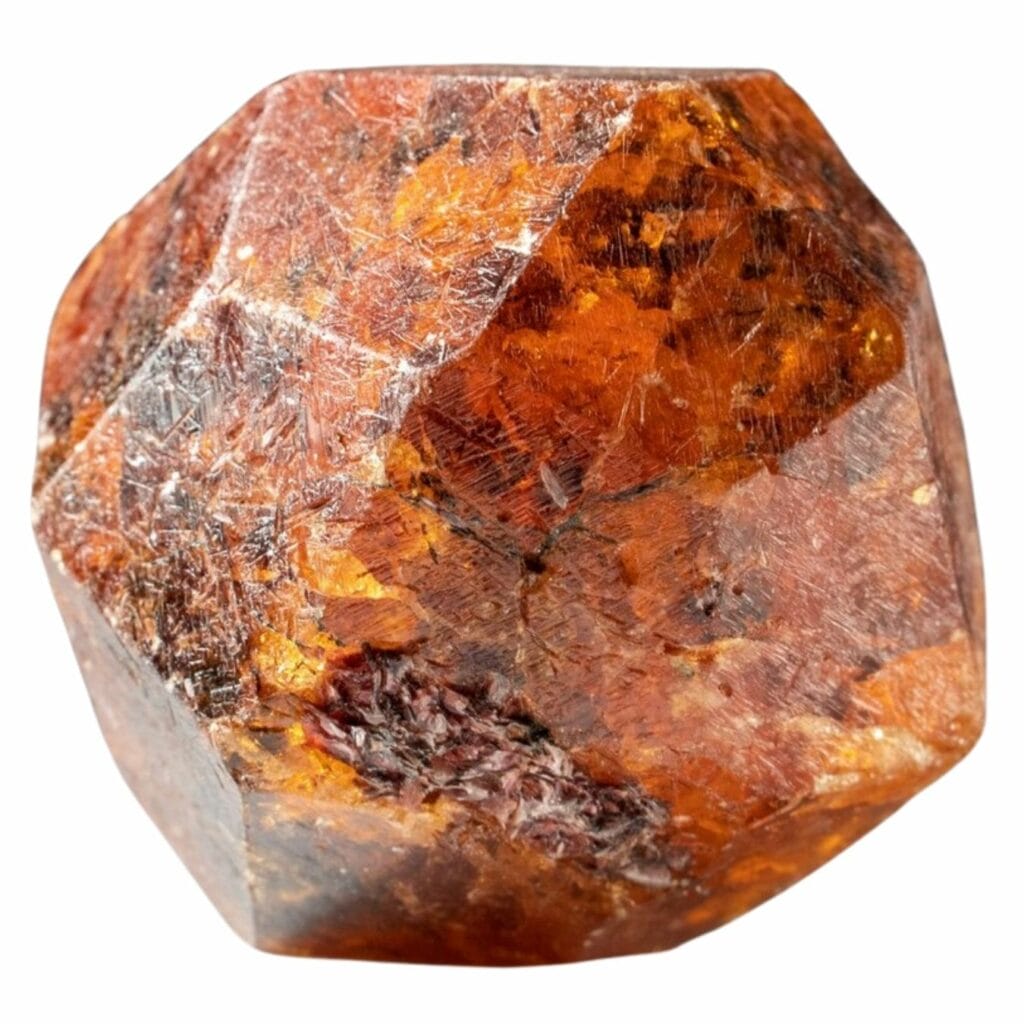
Garnet is a group of minerals known for its deep red color, although it can come in a variety of other colors too. It’s often found in small, rounded crystals that form under high temperatures and pressures, typically in metamorphic rocks.
They are made up of elements like aluminum, iron, magnesium, and chromium, which contribute to the different colors the different types of garnets can have.
One of the most striking things about garnet is its rich, vibrant colors. The most common color is a deep, red wine color, but garnets can also be green, orange, yellow, or purple.
Bright, clear garnets without many internal marks or blemishes are more valuable. The size and shape of the garnet crystals also play a role in their value. Well-formed, larger crystals are typically more sought after than smaller ones.
Garnet isn’t just a pretty stone; it’s also useful. It’s often used as an abrasive for things like sandpaper and waterjet cutting. Garnet sand is known for being very hard and sharp, making it great for cutting and shaping other materials.
Where you can find garnet in Alabama
- Ashland Mining District, Clay County
- Kowaliga, Elmore County
- Foster Mine, Randolph County
Apatite

Apatite is mostly made of calcium phosphate, the same material that makes up human teeth and bones. It can form in many different geological environments, often as crystals in igneous rocks or in veins where hot fluids have moved through rocks.
The colors of apatite are really diverse. They can be green, blue, yellow, or even purple. This variety in color is one of the things that makes apatite so appealing.
The most sought-after is the neon blue-green variety, which is strikingly bright and beautiful.
Sometimes apatite crystals can be pretty big, which is exciting for anyone who loves rocks and minerals.
The rarity of certain apatite colors and crystal forms contribute to its quality. Brightly colored and well-formed crystals are especially prized by collectors.
Then there’s its use in science and industry. Apatite is a key source of phosphorus, which is important for making fertilizer to help plants grow. It’s also used in some environmental cleanup efforts because it can absorb certain harmful chemicals.
Where you can find apatite in Alabama
- Micaville, Cleburne County
- Rockford Mining District, Coosa County
- Elk River, Limestone County
Aquamarine
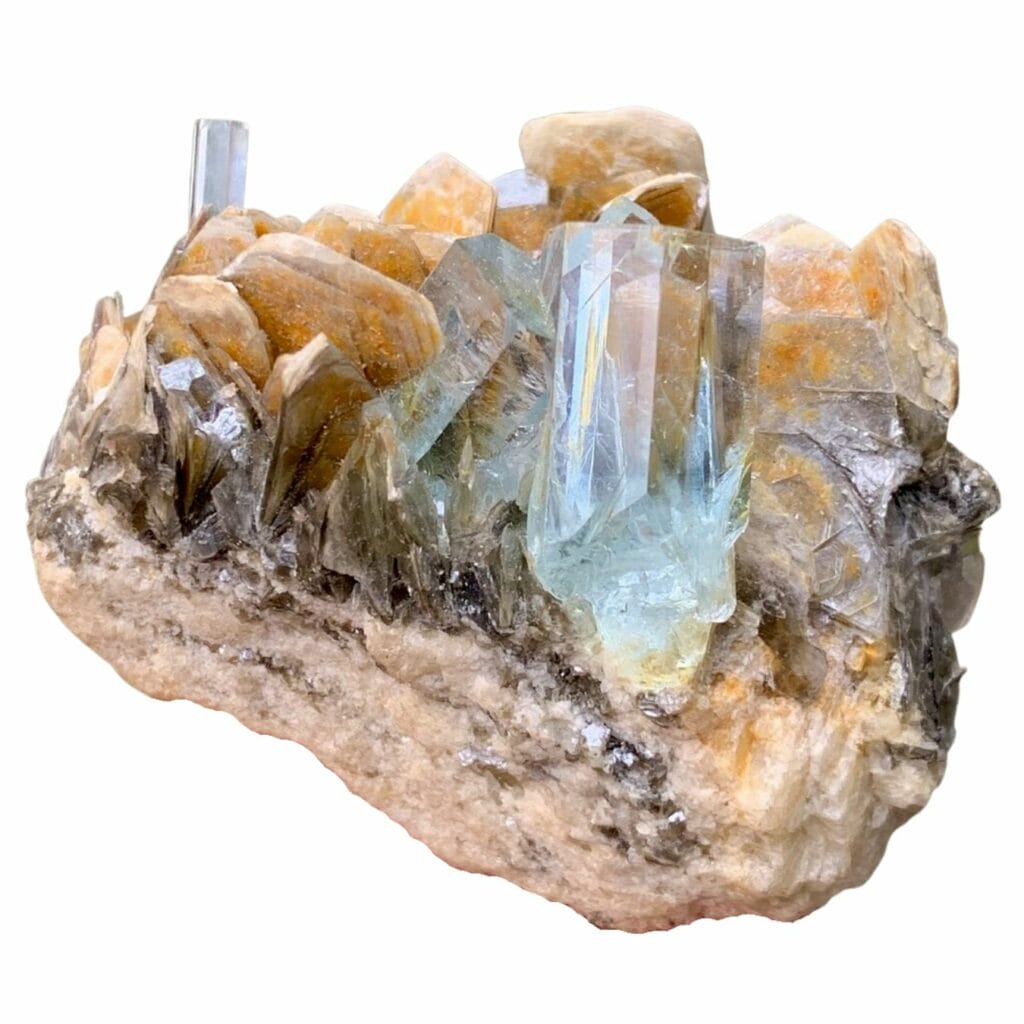
Aquamarine is a stunning gemstone, part of the beautiful array of gemstones found in Alabama. It’s known for its dazzling blue or blue-green color, which reminds many people of the sea.
This gem is actually a type of beryl, the same mineral family that emeralds come from.
Aquamarine forms deep in the Earth under high temperatures and pressures, usually in igneous rocks. The color of aquamarine comes from iron impurities within the beryl.
What makes aquamarine so special is its amazing color and clarity. The most valued aquamarines have a deep, intense blue color, but even lighter blue shades can be quite lovely.
Aquamarine is also known for being very clear, which means it doesn’t have many internal marks or blemishes. This clarity allows light to pass through it easily, making the gemstone sparkle beautifully.
Its color and clarity are major factors in determining the value of aquamarine. People love the calm, refreshing hue of aquamarine, and clear stones without many blemishes are especially prized.
Then there’s its durability. Aquamarine is quite hard, which makes it great for everyday jewelry since it doesn’t scratch or break easily.
Where you can find aquamarine in Alabama
- Thomas Prospect, Hissop, Coosa County
- Randolph County
Calcite
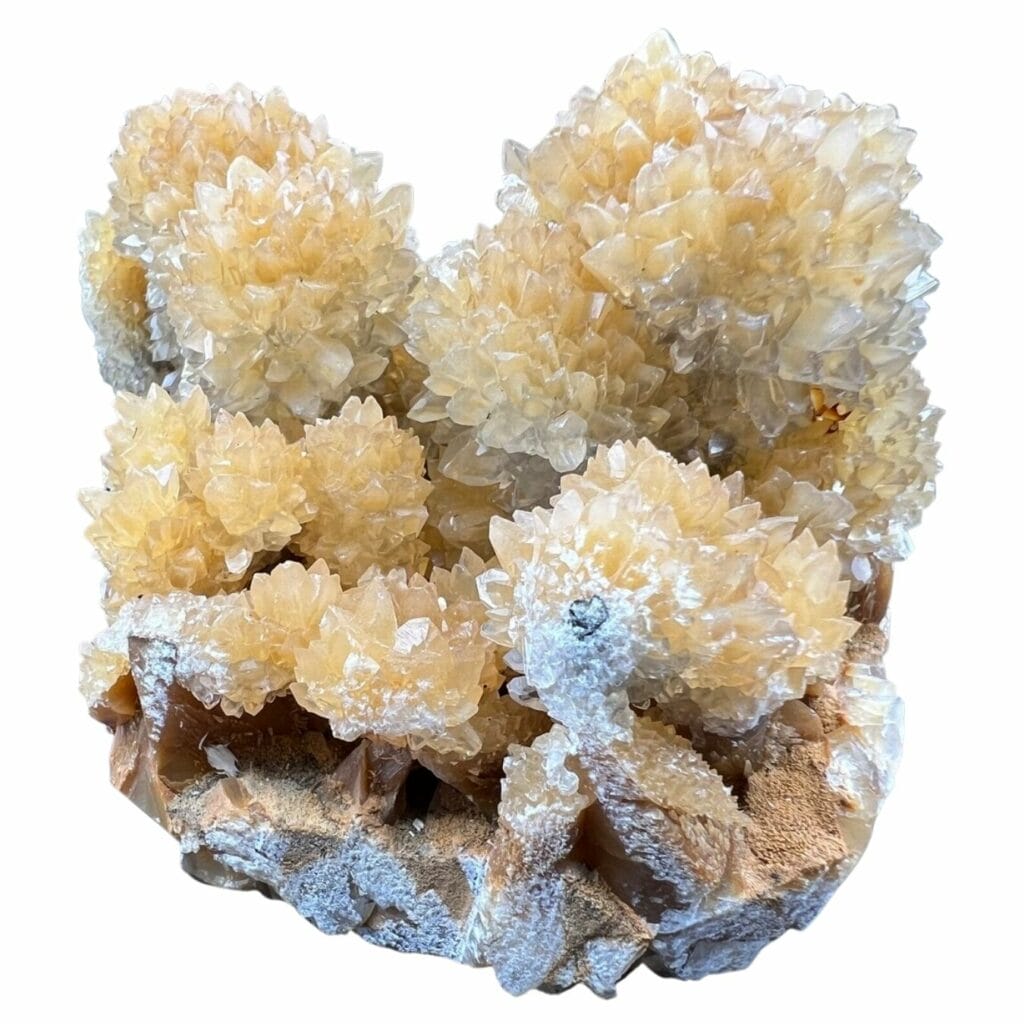
Calcite is among the most common rocks and minerals found here. It’s made mostly of calcium carbonate, which is the same material that makes up seashells and coral.
It forms in many different ways, often when water that has calcium in it gets into cracks in rocks. Over time, as the water evaporates, the calcium carbonate is left behind and turns into calcite.
One of the neat things about calcite is that it can be found almost everywhere. It’s often seen in limestone, a type of rock that forms in layers, often under water.
When you find calcite in limestone, it can look like beautiful crystals or even like a part of the rock itself.
Calcite is also known for its ability to split light into two rays, a property called birefringence. This makes it look like objects seen through it are doubled.
The way the calcite forms into different shapes and colors can be really eye-catching. Also, because it’s so common, calcite is super useful in teaching about minerals and geology.
People also use calcite in making things like cement and as a part of the stuff that makes up toothpaste. So, while it might not be as flashy as some gems, calcite has its own special place in the world of rocks and minerals.
Where you can find calcite in Alabama
- Pinson, Jefferson County
- Ordovician limestones, Limestone County
- Angel Station Mining District, Calhoun County
Fluorite
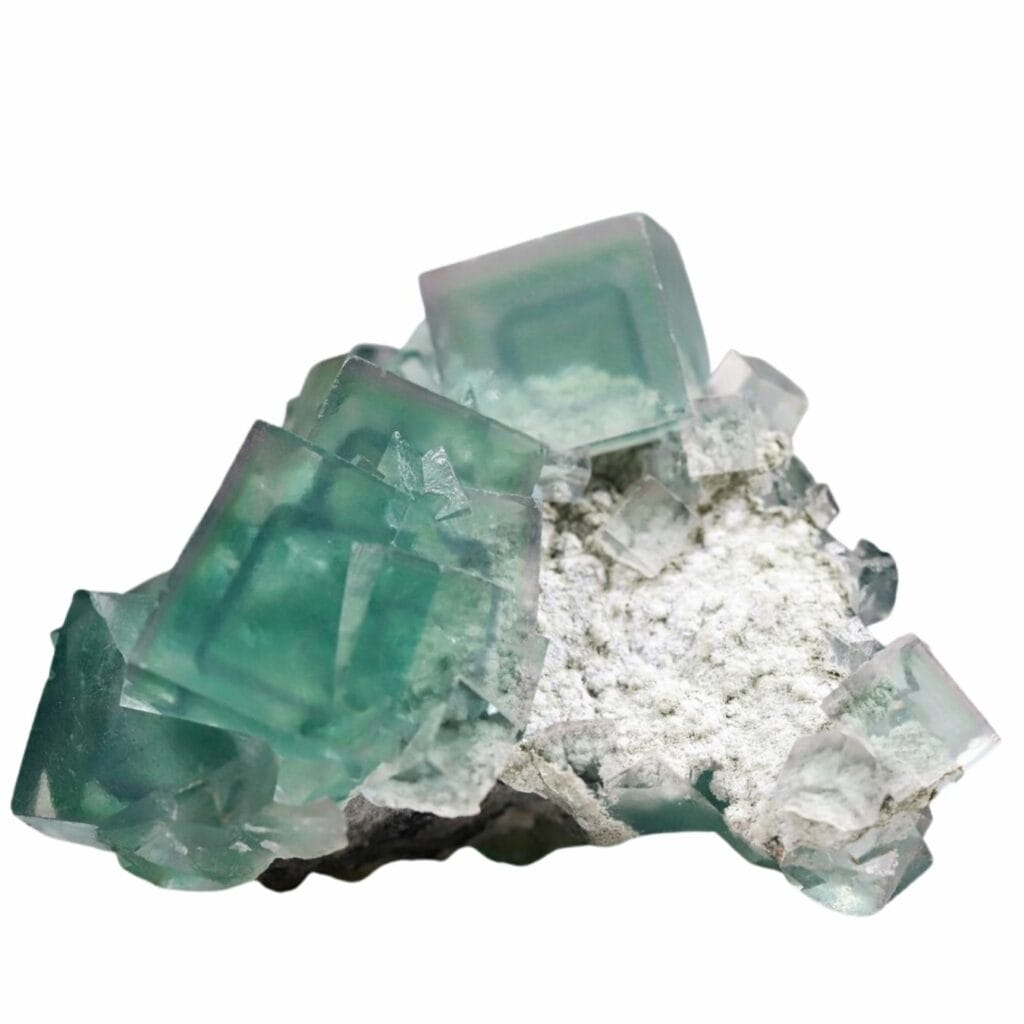
Fluorite is a really cool mineral that’s known for its amazing range of colors – from purples and greens to yellows and blues. It’s made up of calcium and fluoride and forms when hot water filled with minerals flows through cracks in rocks.
As the water cools down, the minerals start to settle out and form crystals. This is how those stunning fluorite crystals are born.
What’s really neat about fluorite is that it can glow under ultraviolet light! This glowing property, known as fluorescence, is actually where the term gets its name. Not all fluorite glows, but when it does, it’s pretty spectacular.
The beauty of fluorite is a big draw. The variety of colors and the way the crystals form make each piece unique. Plus, fluorite is often used in making jewelry and decorative items because of its striking appearance.
Fluorite is also used in the making of steel and other metals and also in some types of glass and enamel. This blend of beauty and usefulness makes fluorite a standout mineral.
Where you can find fluorite in Alabama
- Dutch Bend Mine, Tallapoosa County
- Wills Valley, Etowah County
- Milltown, Chambers County
Gypsum
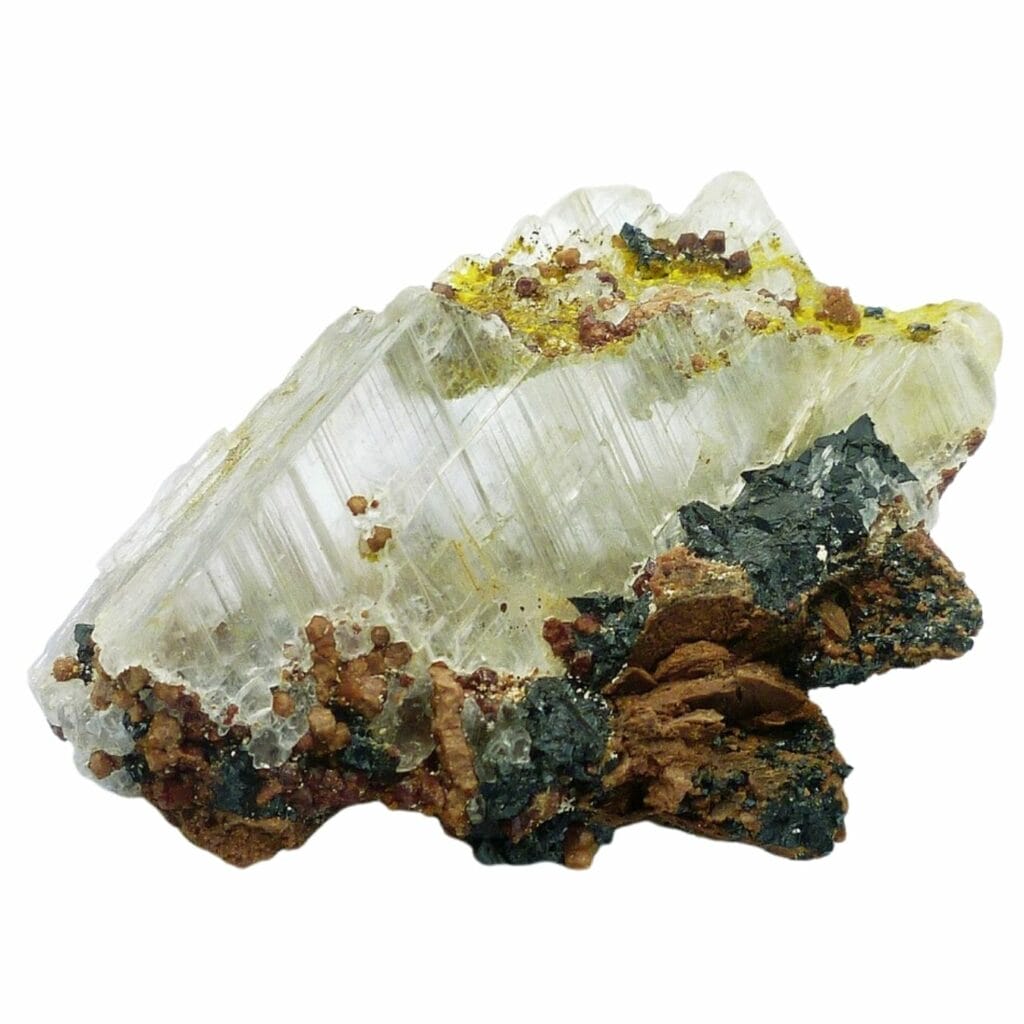
Gypsum is a really interesting mineral that’s known for being soft and for its white or clear crystals. It’ made of calcium sulfate and water, and it usually forms in places where saltwater lakes or seas have dried up over time.
When the water goes away, minerals like gypsum are left behind. Gypsum can be found in layers mixed with other types of rock.
One of the coolest things about gypsum is that it can form some pretty amazing shapes. There are the needle-like crystals called selenite, the flower-like forms known as desert roses, and the smooth, layered gypsum called alabaster.
Each of these forms is unique and shows the different ways gypsum can appear.
Gypsum has a lot of value, not just because it looks nice, but also because it’s super useful. It’s a key ingredient in plaster and drywall, which are used in building houses and other structures.
Farmers also use gypsum to help improve soil. It helps break up clay and adds calcium and sulfur, which are good for plants.
Where you can find gypsum in Alabama
- Cullomburg, Choctaw County
- Hog Mountain Mine, Tallapoosa County
- Castleberry, Conecuh County
Kyanite
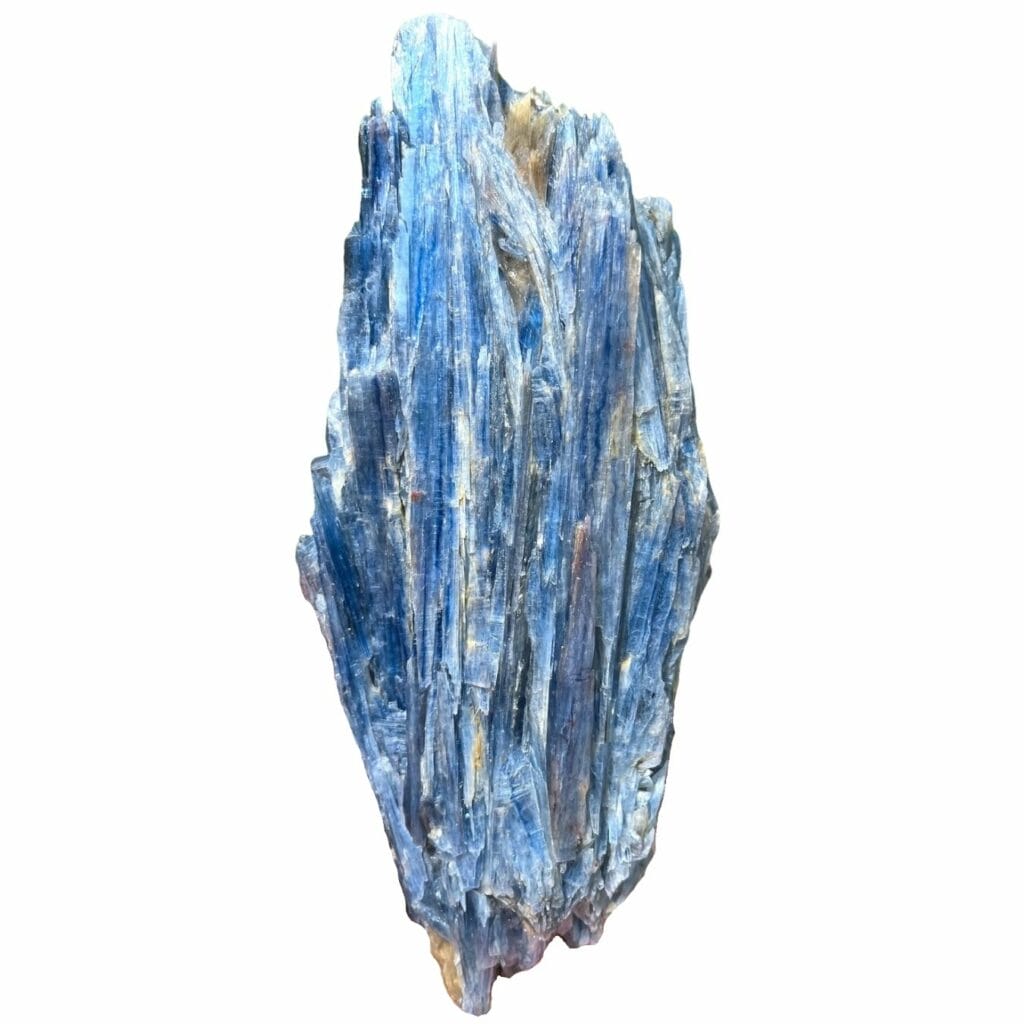
Kyanite adds a striking dash of blue to the many types of rocks found here. It’s often found in areas with lots of metamorphic rocks, adding a splash of blue to the state’s geological palette.
This means it usually forms when other types of rocks are changed by heat and pressure deep inside the Earth.
What’s special about kyanite is its two different hardness levels in one crystal. It’s harder along the length of the crystal and softer across it. This unique property, along with its blue color, makes kyanite stand out among minerals.
Kyanite’s value is influenced by several things. First, its beauty is a big draw for people. The blue color is often compared to sapphire, making it popular for jewelry and decorative items.
Then, there’s its rarity. While not the rarest mineral, finding good quality kyanite in large amounts isn’t very common, which adds to its appeal.
Kyanite is also valued for its uses beyond just looking pretty. In industry, kyanite is used to make products that can withstand high temperatures, like some types of ceramics and refractory materials.
Where you can find kyanite in Alabama
- Lake Harding, Lee County
- Hatchett Creek, Chilton County
- Micaville, Cleburne County
Magnetite

Magnetite is one of the most interesting and valuable rocks that you can find here. It’s known for its strong magnetic properties.
This mineral is made of iron and oxygen and often forms in both igneous and metamorphic rocks. In Alabama, magnetite can be found in various locations, often appearing as small, shiny black crystals or masses.
What makes magnetite special is its natural magnetism. It’s one of the few minerals that can attract a magnet or even become a magnet itself when it’s struck by lightning or heated up.
It can be used in all sorts of things, from compasses to electrical transformers.
Then there’s its iron content. Magnetite is an important source of iron, which is used to make steel and other metal products. This makes it not just interesting, but also very useful in industries.
Where you can find magnetite in Alabama
- Gold Ridge, Randolph County
- Antioch Church, Clay County
- Freedonia, Chambers County
Smoky Quartz
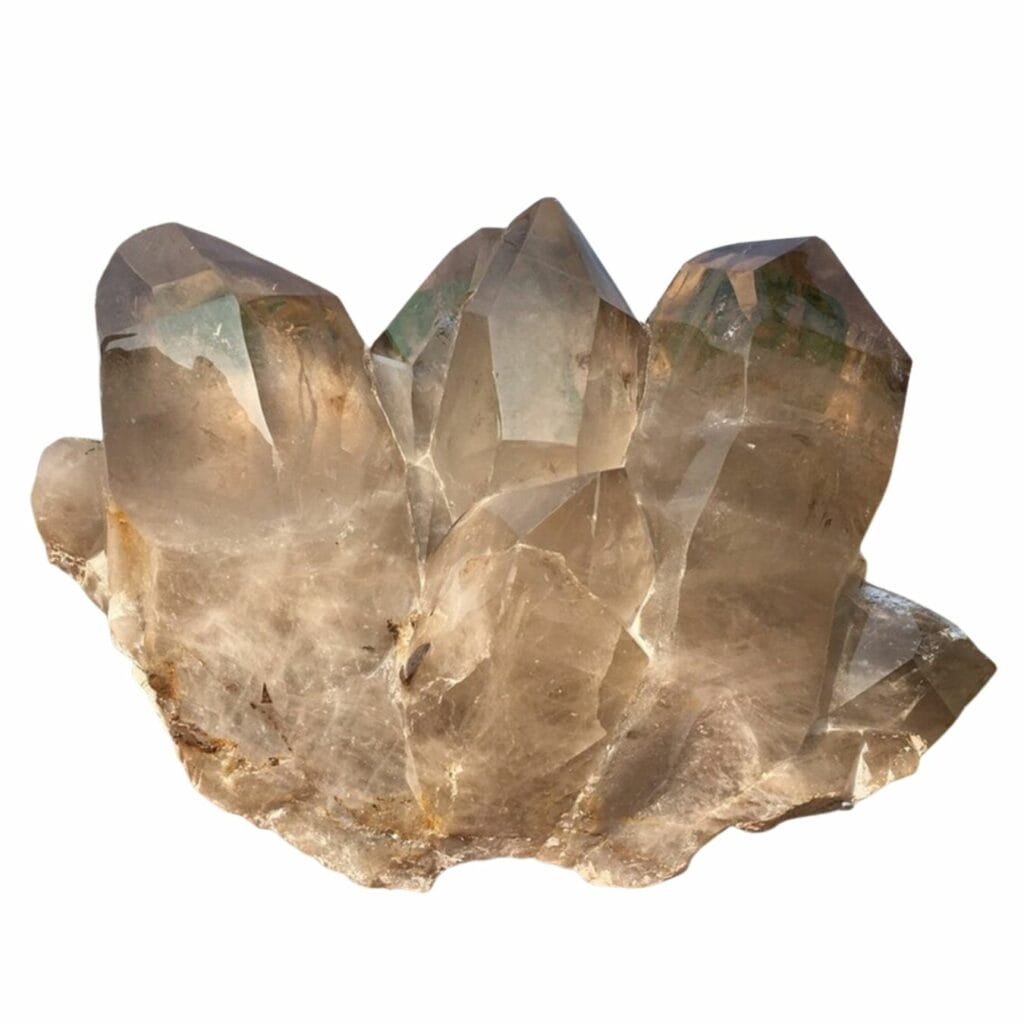
Smoky quartz is a captivating variety of quartz, famous for its smoky color, which can range from light gray to a deep, dark brown.
This beautiful mineral is found in various locations in Alabama, adding a touch of elegance to the state’s diverse geological collection.
This mineral gets its distinctive color from natural radiation from the Earth. When normal, clear quartz is exposed to this radiation over a long time, it changes color and becomes smoky quartz.
The color of smoky quartz is a big part of what makes it so appealing. The depth and richness of its color can vary a lot, and sometimes it’s mixed with other colors like orange or black. This variety means that each piece of smoky quartz is unique.
Apart from its beauty, smoky quartz is valued for its physical properties. It’s known for being very durable, which makes it great for everyday wear in jewelry.
Where you can find smoky quartz in Alabama
- Round Mountain, Cherokee County
- Uphape Creek, Macon County
- Rockford Mining District, Coosa County
The Best Locations For Crystal Mining in Alabama
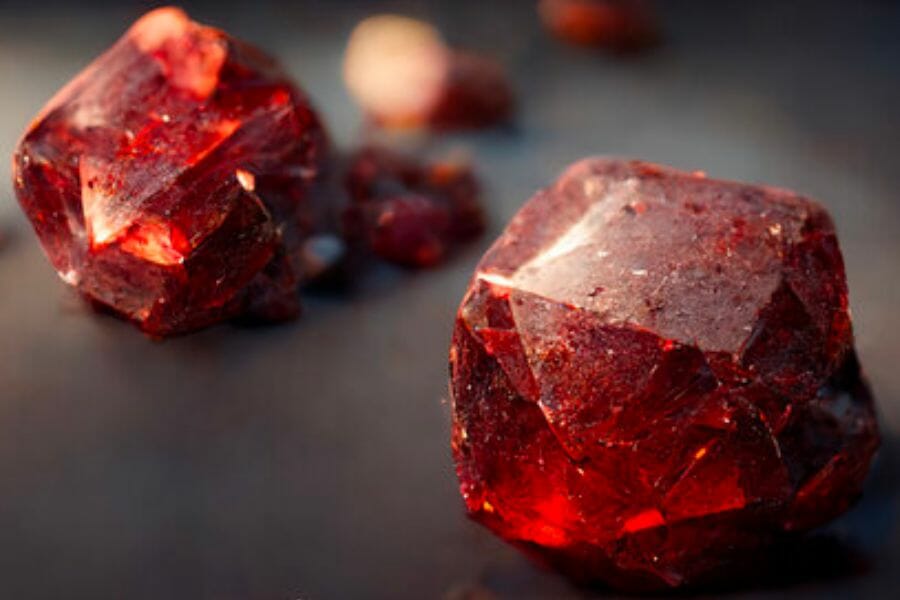
We selected our top 5 recommended places for crystal mining here based on our experiences and on the recommendations of our fellow experienced collectors and enthusiasts.
Always Confirm Access and Collection Rules!
Before heading out to any of the locations on our list you need to confirm access requirements and collection rules for both public and private locations directly with the location. We haven’t personally verified every location and the access requirements and collection rules often change without notice.
Many of the locations we mention will not allow collecting but are still great places for those who love to find beautiful rocks and minerals in the wild without keeping them. We also can’t guarantee you will find anything in these locations since they are constantly changing.
Always get updated information directly from the source ahead of time to ensure responsible rockhounding. If you want even more current options it’s always a good idea to contact local rock and mineral clubs and groups
Lake Martin is Our Favorite Crystal Mine in Alabama

Tallapoosa, Elmore, and Coosa Counties, AL
One of the best crystal hunting locations in our state is Lake Martin. In fact, this is also one of the great places to find high-quality gems in Alabama. Created in 1926, this man-made lake was created by damming the Tallapoosa River. Since then, Lake Martin has become a beloved recreational spot for fishing, boating, and, of course, crystal hunting.
Lake Martin is located in the foothills of the Appalachian Mountains, providing a unique landscape for crystal hunters. Many spots around the lake prove to be abundant with crystals: the banks of the lake, the creeks that feed into it, and the areas surrounding the many small islands scattered throughout the lake. Aside from its rich resources, this location is also incredibly scenic and peaceful.
To get here, start by heading to the town of Dadeville. From there, follow the signs to the lake, and be sure to bring all the necessary gear for a day of crystal hunting. Once you arrive, take some time to explore the area and get a feel for the different types of rocks and formations here.
Where we found crystals at Lake Martin
We had the best time and success exploring Lake Martin for crystals, especially when we explored the outcrops on west shores, access areas on east shores, and south of the lake along river. Here, you can find different crystals, like Epidote, Hematite, Quartz, Ruby, Sapphire, and Unakite.
If you want REAL results finding incredible rocks and minerals you need one of these 👇👇👇
Finding the coolest rocks in isn’t luck, it's knowing what to look for. Thousands of your fellow rock hunters are already carrying Rock Chasing field guides. Maybe it's time you joined the community.
Lightweight, mud-proof, and packed with clear photos, it’s become the go-to tool for anyone interested discovering what’s hidden under our red dirt and what they've already found.
Join them, and make your next rockhounding trip actually pay off.
What makes it different:
- 📍 Find and identify 140 incredible crystals, rocks, gemstones, minerals, and geodes across the USA
- 🚙 Field-tested across America's rivers, ranchlands, mountains, and roadcuts
- 📘 Heavy duty laminated pages resist dust, sweat, and water
- 🧠 Zero fluff — just clear visuals and straight-to-the-point info
- ⭐ Rated 4.8★ by real collectors who actually use it in the field
Black Warrior River
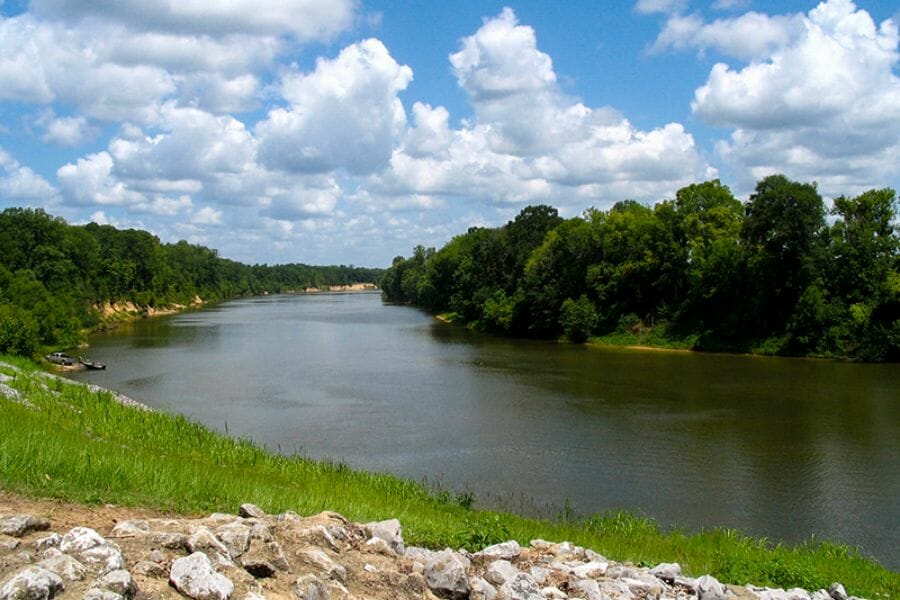
West-Central Alabama
The Black Warrior River was named after the Native American tribe that once inhabited the area, and it played a significant role in the Civil War. Today, it’s known for its recreational opportunities, including crystal hunting.
This river is located in the northern part of our state, winding its way through the Appalachian Mountains. Because of this, you can expect that the area is incredibly scenic, with beautiful views of the river and surrounding mountains. It’s also home to an abundance of wildlife, making for a truly immersive outdoor experience.
If you wish to visit here, head to the town of Tuscaloosa. From there, you can access the river at various points, including Oliver Lock and Dam, which is a popular crystal hunting spot as well.
Where we found crystals at Black Warrior River
We highly recommend exploring the mines and pits along the Black Warrior River between Brookwood and Peterson, where you can find a variety of crystals like Agate, Chalcedony, Jasper, Kyanite, and Vivianite.
Read our guide to know just how much are crystals worth.
Hog Mountain
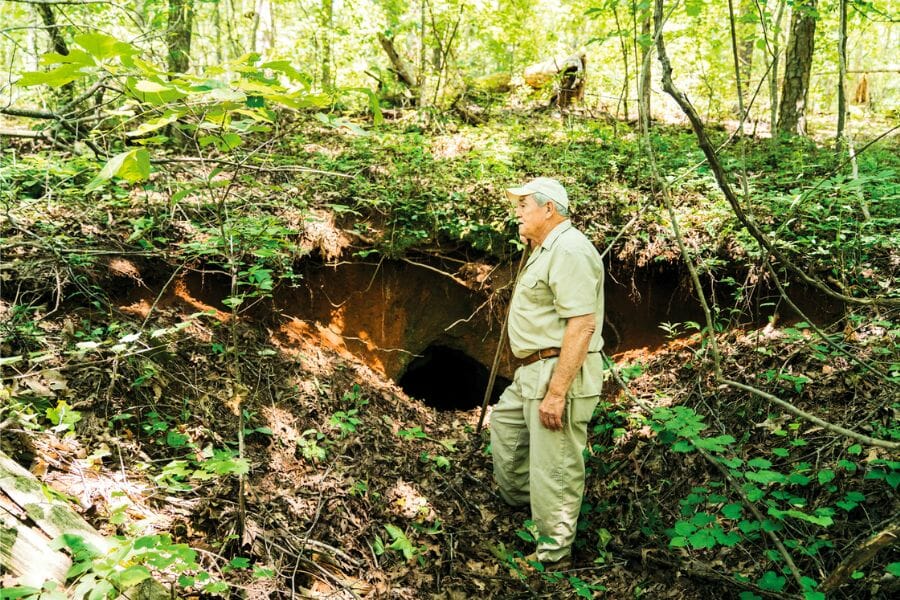
Tallapoosa County, AL
Located in Tallapoosa County, Hog Mountain was once a hub for gold mining in the 1800s. In fact, it’s said that even today, there are still some small gold deposits to be found in the area. But did you know that this mountain also boasts of having beautiful crystals?
Hog Mountain is primarily composed of metamorphic rocks like schist and gneiss. It’s a great spot for crystal hunting because it offers a wide variety of minerals to be found. It’s also home to a wide variety of plant and animal life, making it a scenic and enjoyable place to explore.
Planning your visit here? Head to the town of Alexander City and from there, take Highway 63 to the small town of New Site. Once you’re in New Site, turn onto County Road 83, and follow it until you see the signs for the Hog Mountain Wildlife Management Area. There, you’ll find the entrance to Hog Mountain.
Where we found crystals around Hog Mountain
This location is rich in Galena and Pyrite crystals. You can find them if you explore the northeast portion of Hog Mountain.
Hillabee Creek
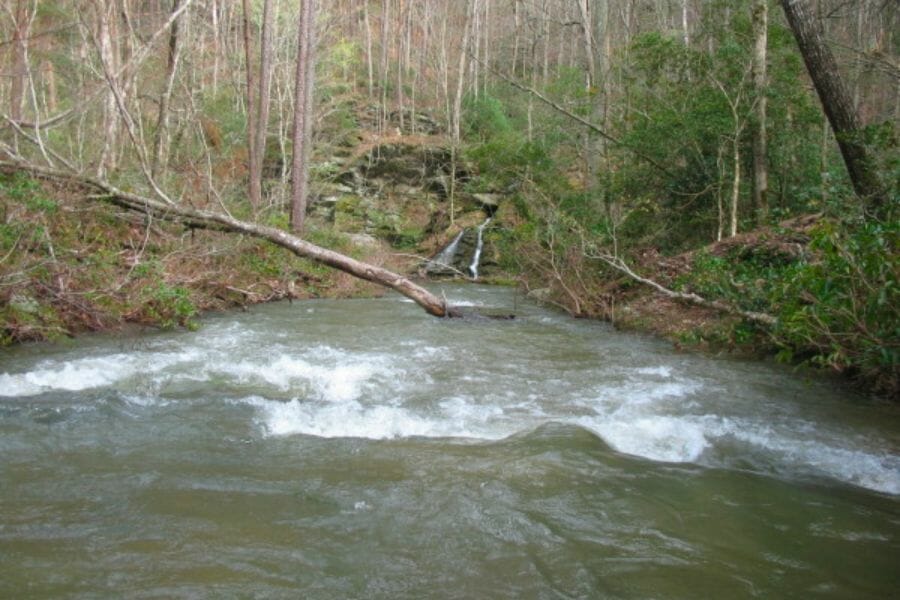
Tallapoosa County, AL
Hillabee Creek was once inhabited by the Creek Indians, and it’s believed that they used the creek as a source of water and to hunt and fish. Today, the creek is known for its beautiful crystals and natural surroundings.
Located in the southern Appalachian Mountains, Hillabee Creek is primarily composed of rocks like granite, gneiss, and schist. These rocks have been subjected to intense heat and pressure over time, creating pockets where minerals have been able to grow.
To go here, head to the town of Alexander City and take Highway 22 east until you reach Hillabee Creek Road. Follow this road until you reach the creek. There are several access points along the creek where you can start your crystal hunting adventure.
Where we found crystals at Hillabee Creek
You can find amazing samples of Chalcopyrite, Copper, and Pyrite crystals when you explore the Childers prospect in the bank of Hillabee Creek.
Tombigbee River
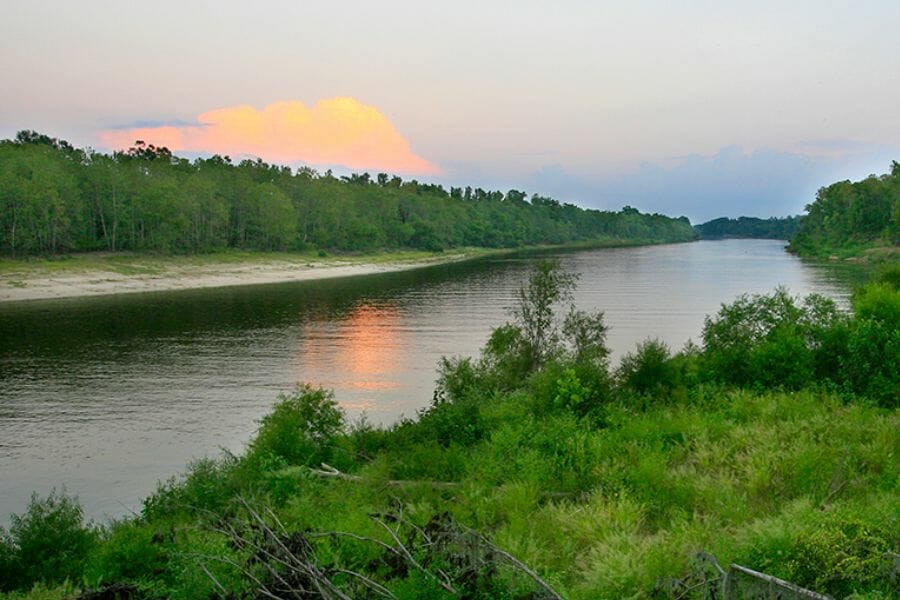
Clarke County, AL
Located in west-central Alabama, Tombigbee River was an important transportation route for Native Americans and European settlers, and it played a key role in the development of the region’s economy and culture.
Tombigbee River is a tributary of the Mobile River, and it runs for approximately 200 miles through Alabama and Mississippi. The area around the river is primarily composed of sedimentary rocks like sandstone and shale, which have been slowly eroded over time by the river’s powerful flow.
Tombigbee River is a fantastic spot for crystal hunting because of the wide variety of minerals you can find there. The river’s powerful flow has exposed many interesting geological formations, and it’s possible to find crystals and minerals embedded in the rocks along the riverbanks.
If you’re keen to visit here, head to the town of Demopolis. From there, you can access the river at several points, including the Demopolis City Landing and the Foscue Creek Park Boat Ramp.
Where we found crystals at Tombigbee River
Truly rich in different crystals, you can find Agate and Chalcedony when you search in the road cuts, clay banks, along nearby Fire Tower road, and in the stream gravels of Tombigbee River and its tributary.
Our Other Favorite Places For Crystal Hunting
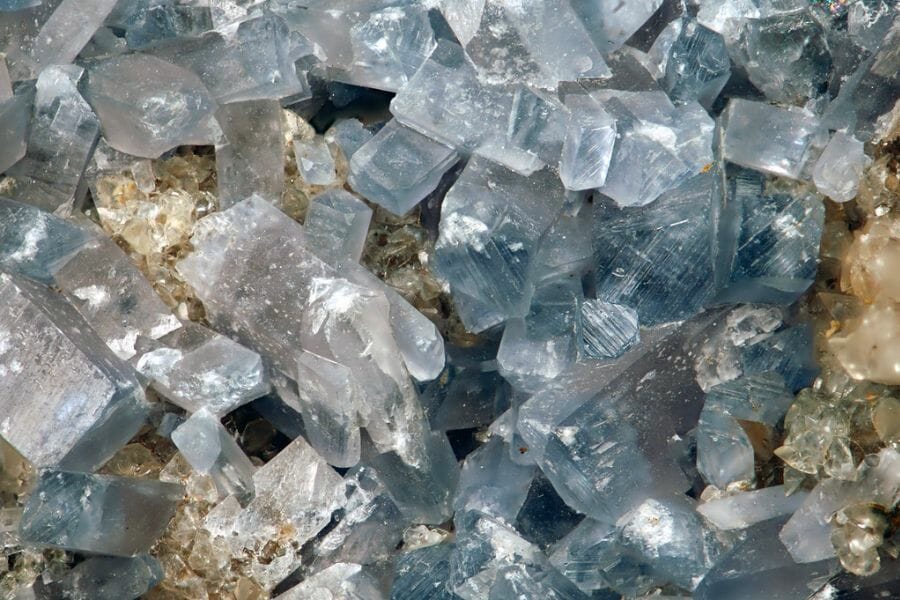
Aside from our top recommendations, there are still tons of different areas that we can share with you. After all, a state as richly endowed as ours will not easily run out of locations for crystal mining. Many of these places are even great sites to find Alabama geodes.
Where you can find crystals for free in Alabama
Let’s discuss first the locations where you can find crystals free of charge. While many of the top sites require fees, there are still plenty astounding spots that you can explore without spending any money.
| County | Location |
| Bibb | Area limestone quarries |
| Blount | In a series of pits and prospects in Blountsville area |
| Chambers | In areas adjacent to the dirt road in Lafayette area |
| Cherokee | On the Lowe farm |
| Elmore | Bluff wall on west bank, in talus, and on water’s edge at Jordan Dam |
| Franklin | Phil Campbell area gravel pits |
| Jackson | At Jacobs Mountain |
| Jefferson | In thin veins in schist of Pleasant Grove Church |
| Madison | Stream gravels, as float |
| Marengo | In Barton’s Bluff area |
| St. Clair | Old copper prospects |
Other great places to dig for crystals
If you’re willing to spend some money in your quest for crystals, then these are some more locations you can consider. The fees may vary depending on the season— sometimes they may even be free— so it’s important to contact them before visiting.
| County | Location |
| Calhoun | In lead and iron mines |
| Clay | In many mica and gold mines, M & G Mine in Ashland, area mines of Cragford, and at Delta Mine |
| Cleburne | At the Stone Hill Copper Mine (aka Woods Copper Mine) |
| Coosa | Countywide old gold mines |
| Randolph | On the dumps of the J. J. New No. 2 Mine |
| Talladega | Ribble’s Mine, Woodford Tract, Storey, Warwick, and Cogburn or Gold Log Mine |
| Tallapoosa | At the Kidd Mine, Mica Hill Mine, and Dudleyville area mine dumps |
How to find crystals in Alabama
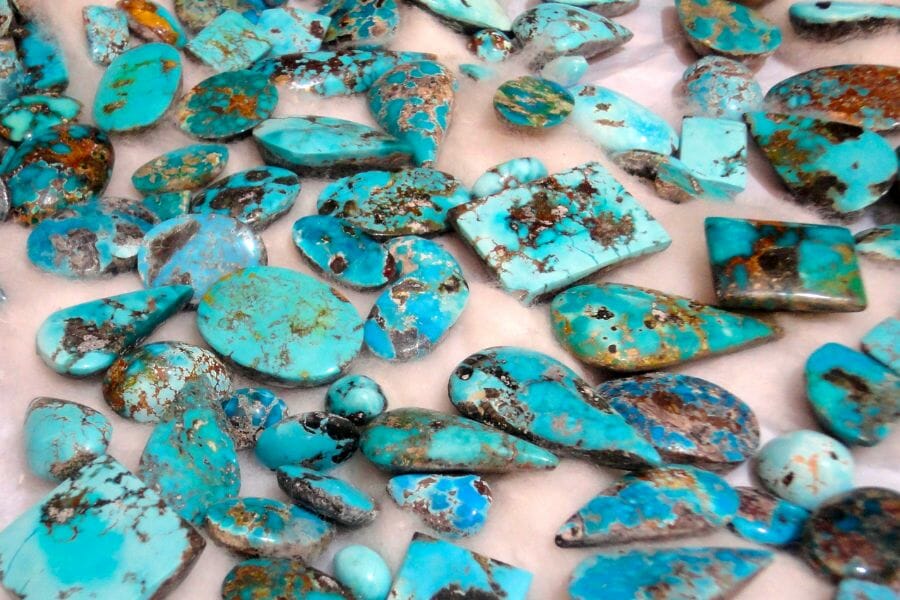
Several of our recommended places above cover a wide base, so to help you focus your search, we’re also discussing here the particular areas where crystals can usually be found. You can start your search in these places:
Streams and Creeks
Streams and creeks are great locations to find crystals because they are natural pathways for minerals to flow through. This means that crystals can be naturally deposited in these waterways, making them prime locations for rockhounds to search for these treasures. Additionally, water can help to reveal crystals that may be hidden in dirt or rocks by washing them away and exposing them for us to find.
Rivers and River Banks
Looking for crystals in rivers and river banks can be an exciting adventure for any rockhound in Alabama. These locations offer a unique opportunity to find a variety of crystals that have been naturally tumbled and polished by the water, making them smooth and shiny. Alabama has a number of rivers and streams and the riverbanks and shallow areas of these rivers can be great places to find crystals that have been washed downstream from their original sources.
Mines and Mine Dumps
Another unique and exciting way to find crystals is by searching in mines and mine dumps. Mines are locations where minerals and crystals are naturally formed and can be found in abundance. Some mines have been abandoned for decades, leaving behind piles of rocks and debris that can contain valuable treasures. Searching for crystals here is a great opportunity to see the unique formations and colors that they can take on when they form in the earth.
Alabama Crystal Mining Laws And Regulations
Crystal mining in Alabama is perfectly legal for as long as you comply with our state’s laws regarding it. If you’re unaware of these laws, you may checkout the Alabama Department of Conservation and Natural Resources (ADCNR) which regulates crystal hunting here. As a general rule, you should get the necessary permissions and permits for concerned government offices in the area that you will mine. For private lands, the permission of the owner is strictly required. Also, check on any environmental rules and regulations that you should observe. At the end of the day, as responsible crystal hunters, we want to help ensure that this activity remains legal and sustainable for other enthusiasts and collectors, too.
The Best Crystal Shops In Alabama

While personally taking the time and effort to find crystals is an activity that’s well worth it, unfortunately, not all of us have the resources to do it. If you prefer visiting just one place but having it all, you may want to consider stopping by the local crystal shops here. You can just imagine how diverse their crystal selections are! Here are some of the best stores here:
- Soulmates Jewelry and Crystals – 55 Co Rd 551, Trinity, AL 35673
- Amethyst Sage – 1809 Hwy 31 SW, Hartselle, AL 35640
- The Brewer’s Alley – Bldg B, 1905 Main St Ste A, Daphne, AL 36526
- Mystical Treasures Emporium – 1500 Mulberry St, Montgomery, AL 36106
- Cosmic Connexion – 814 Annalue Dr, Auburn, AL 36830
- Practical Magick – 1508 6th Ave SE, Decatur, AL 35601
- Hesperia Mystic Shoppe – 4212 N Jackson Hwy, Sheffield, AL 35660
- Yonique Spa & Spiritual Boutique – 5106 McClellan Blvd Suite A, Anniston, AL 36206
- Tie Dye & Crystal Hippy Shop – 5580 Nevius Rd, Mobile, AL 36619
- 4 Fabulous Girls – 300 Hwy 78 E ste b2, Jasper, AL 35501
Additional places to find crystals in nearby states
If you’ve already tried all of our recommendations above or are planning a trip out of the state, you should check out our guides for neighboring states:
If you have any recommendations we haven’t covered, please leave them in the comments below!

